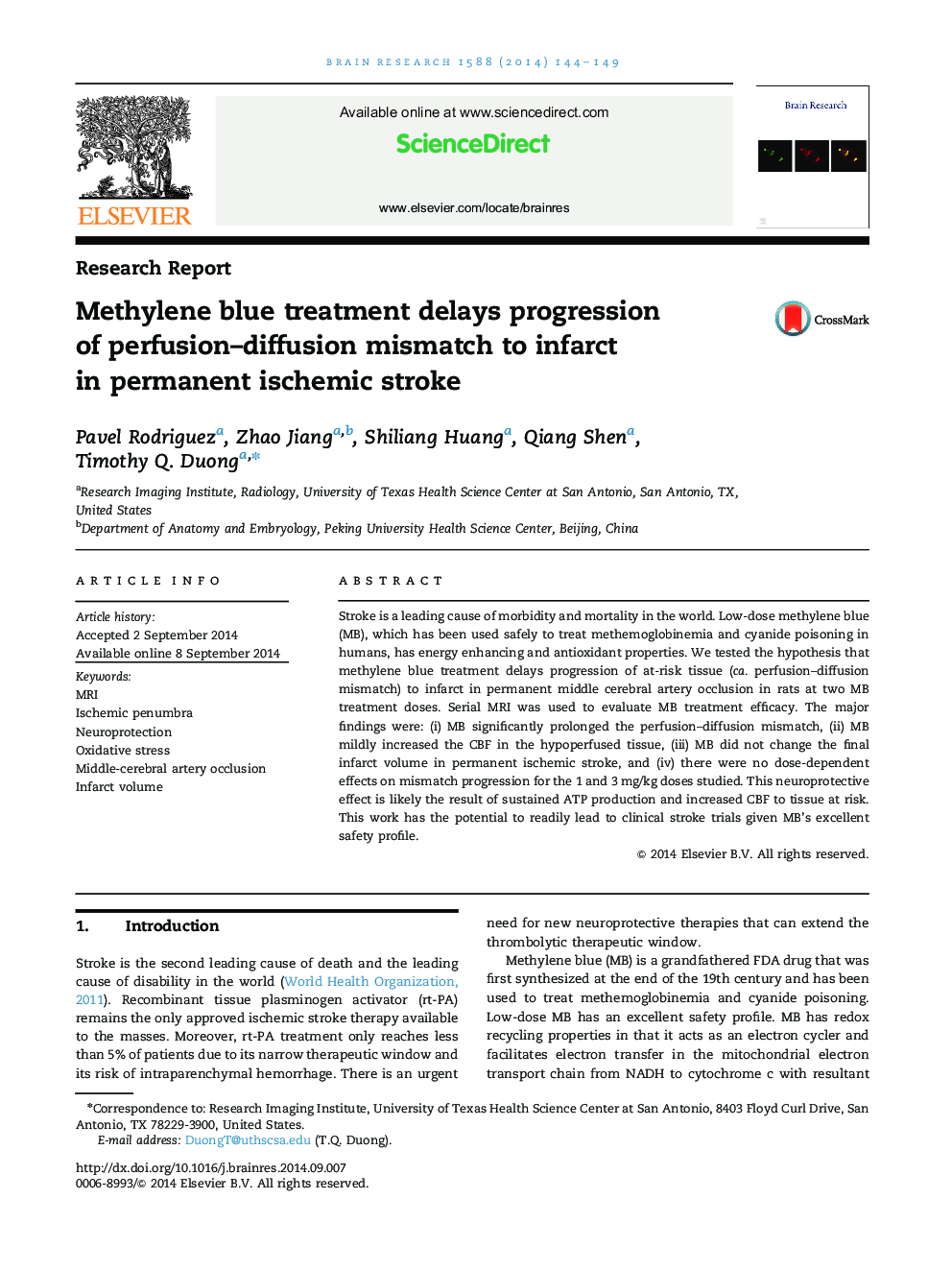| Article ID | Journal | Published Year | Pages | File Type |
|---|---|---|---|---|
| 4324080 | Brain Research | 2014 | 6 Pages |
Abstract
Stroke is a leading cause of morbidity and mortality in the world. Low-dose methylene blue (MB), which has been used safely to treat methemoglobinemia and cyanide poisoning in humans, has energy enhancing and antioxidant properties. We tested the hypothesis that methylene blue treatment delays progression of at-risk tissue (ca. perfusion-diffusion mismatch) to infarct in permanent middle cerebral artery occlusion in rats at two MB treatment doses. Serial MRI was used to evaluate MB treatment efficacy. The major findings were: (i) MB significantly prolonged the perfusion-diffusion mismatch, (ii) MB mildly increased the CBF in the hypoperfused tissue, (iii) MB did not change the final infarct volume in permanent ischemic stroke, and (iv) there were no dose-dependent effects on mismatch progression for the 1 and 3Â mg/kg doses studied. This neuroprotective effect is likely the result of sustained ATP production and increased CBF to tissue at risk. This work has the potential to readily lead to clinical stroke trials given MB's excellent safety profile.
Related Topics
Life Sciences
Neuroscience
Neuroscience (General)
Authors
Pavel Rodriguez, Zhao Jiang, Shiliang Huang, Qiang Shen, Timothy Q. Duong,
